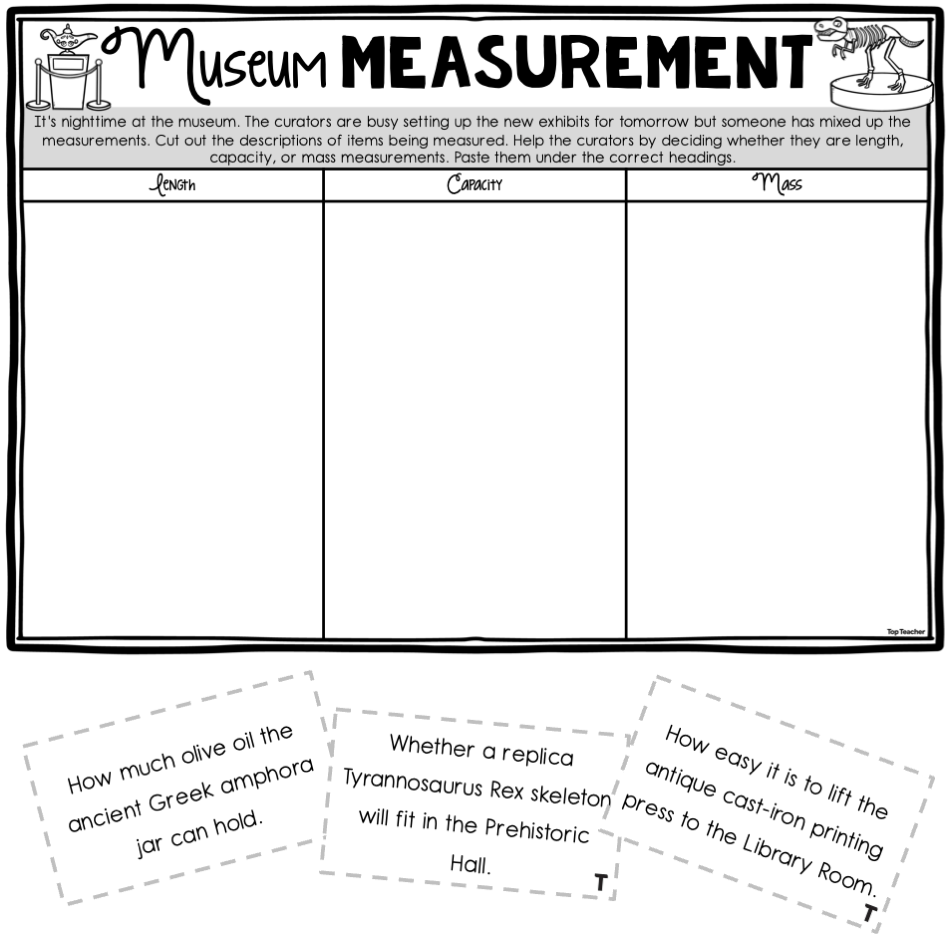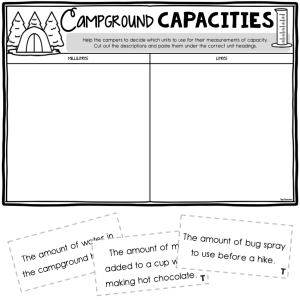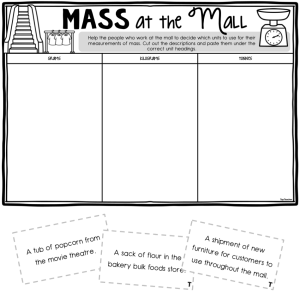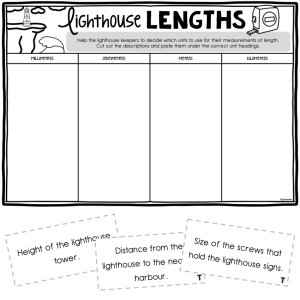Museum Measurement: Length, Capacity or Mass? Sort Activity

Description
Get your students sorting and classifying real-world measurement tasks with this interactive and engaging Museum Measurement: Length, Capacity or Mass? Sort Activity. This museum-themed activity brings measurement concepts to life, offering a hands-on way to explore length, mass and capacity in a meaningful and memorable context.
Students will take on the role of a museum curator, tasked with organising a collection of measurement-related descriptions based on the type of measurement used. From moving heavy exhibits to filling display tanks or arranging delicate specimens, each scenario reflects a task that might be encountered behind the scenes of a museum. Students will read each description carefully, decide whether it relates to length, capacity or mass, and paste it into the appropriate column on their worksheet.
This resource includes one standard sorting worksheet and three differentiated sets of measurement descriptions. Each version increases in complexity, with an additional example for each measurement category in the more advanced sets. Two identical sets of descriptions are included per page, making printing and preparation more efficient. Simply choose the version that suits each student or group, cut the pages in half, and you’re ready to go!
Key Learning Outcomes
- ✅ Identify and classify measurement types: length, mass and capacity
- ✅ Use context clues to determine appropriate measurement categories
- ✅ Develop reasoning skills through sorting and justifying decisions
- ✅ Strengthen understanding of real-world measurement scenarios
What’s Included
- 1 museum-themed sorting worksheet with columns for length, capacity and mass
- 3 differentiated versions of measurement description cards:
- - Version 1: basic set with fewer examples for each category
- - Version 2: includes one additional example per measurement type
- - Version 3: most challenging, with a total of six descriptions per type
- 2 identical sets of cards per printed page for efficient use of paper
Materials Needed
- Scissors and glue sticks for each student
- Printed worksheet (1 per student)
- Printed description cards (half page per student)
- Optional: folders or envelopes for keeping cut-out cards organised
How to Use
- Introduce the concept of measurement types, reviewing real-life examples of length, mass and capacity.
- Distribute the museum-themed worksheet to all students.
- Based on ability level, provide each student or group with the appropriate set of descriptions.
- Have students cut out each task and decide which measurement it belongs to.
- Students paste each description in the correct column and review their answers with a peer or as a class.
Ideas for Classroom Use
- 💡 Use this as a consolidation task following a unit on measurement
- 💡 Set up the activity as a small group rotation with scissors and glue ready
- 💡 Turn the scenarios into a physical sorting game using labels and a wall chart
- 💡 Pair this task with a discussion on how museums use measurement in conservation, display and planning
Top Teacher Tips
- 💛 Print the description pages on coloured paper for easy version sorting
- 💛 Laminate the cards for reuse – students can sort and place them with blu-tack or Velcro
- 💛 Use this task as a formative assessment by observing how students explain their choices
- 💛 Invite students to create their own museum-themed measurement scenarios as an extension task
This measurement sort is a fantastic way to build your students’ understanding of how and when we use length, capacity and mass in everyday life. With its engaging theme, differentiation options and classroom flexibility, it’s a must-have addition to your Maths toolbox!
Additional information
| Number of Pages | 6 |
|---|---|
| File Format | |
| Australian Curriculum Code | AC9M3M01, AC9M3M02 |
Australian Curriculum V9
F - 6
Lorem ipsum dolor sit amet, consectetur adipiscing elit.
Lorem ipsum dolor sit amet, consectetur adipiscing elit.
Lorem ipsum/ Lorem ipsum/ Lorem ipsum
Lorem ipsum dolor sit amet, consectetur adipiscing elit.
Lorem ipsum dolor sit amet, consectetur adipiscing elit.
Lorem ipsum/ Lorem ipsum/ Lorem ipsum
Lorem ipsum dolor sit amet, consectetur adipiscing elit.
Lorem ipsum dolor sit amet, consectetur adipiscing elit.
Lorem ipsum/ Lorem ipsum/ Lorem ipsum
Lorem ipsum dolor sit amet, consectetur adipiscing elit.
Lorem ipsum dolor sit amet, consectetur adipiscing elit.
Lorem ipsum/ Lorem ipsum/ Lorem ipsum
Lorem ipsum dolor sit amet, consectetur adipiscing elit.
Lorem ipsum dolor sit amet, consectetur adipiscing elit.
Lorem ipsum/ Lorem ipsum/ Lorem ipsum



